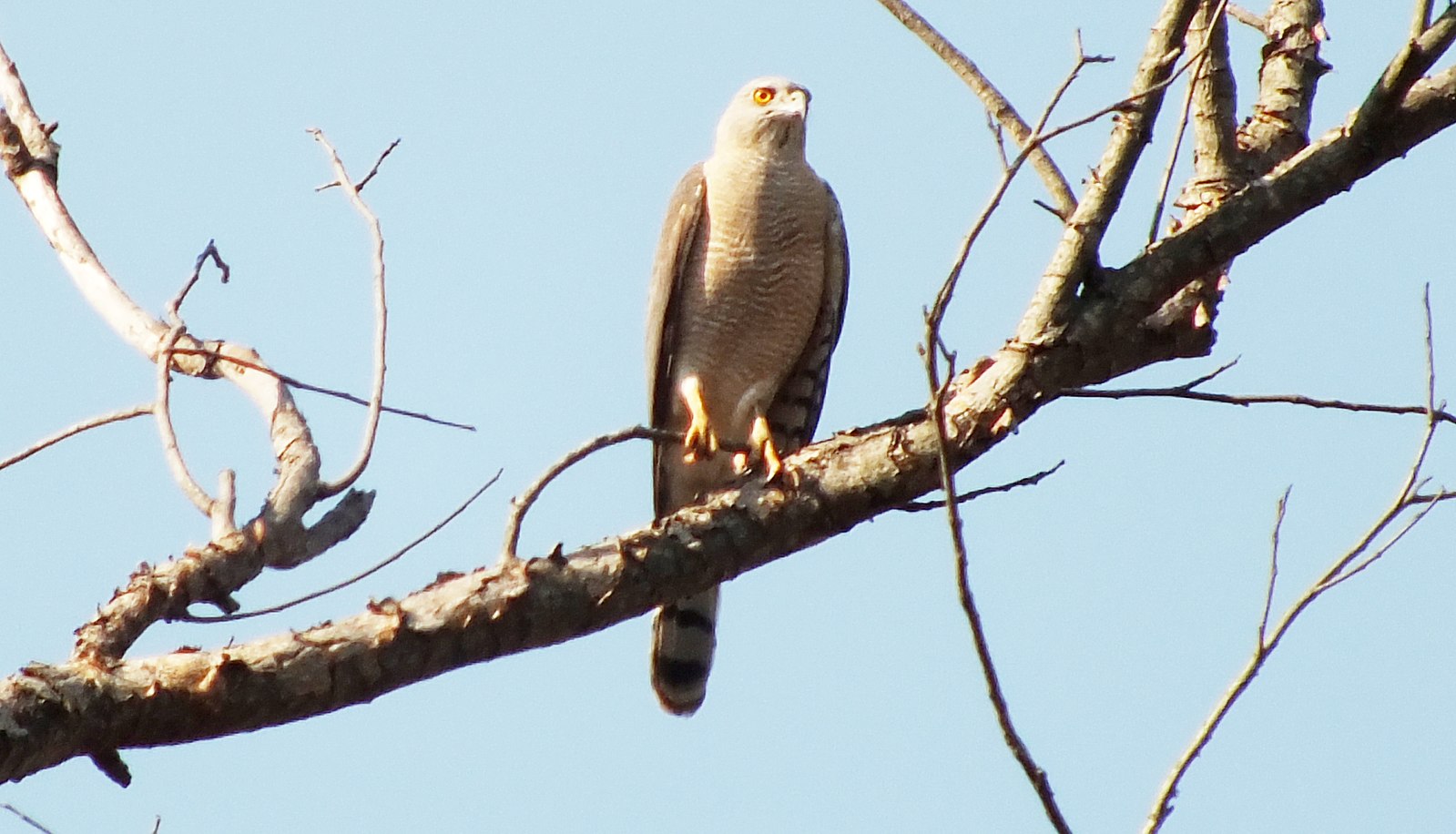The Shikra, also known as Accipiter badius, is a small raptor bird that is widespread across Asia and Africa. Its size ranges from 26 to 30 cm, making it a relatively small bird of prey with short and rounded wings and a narrow tail.
Shikra Size and Appearance
Adult male Shikras have a reddish iris, blue-gray upperparts, and fine brownish-orange barring on the underparts. Females, on the other hand, have a yellowish iris and brownish-gray upperparts with narrow dark barring on the tail. Juveniles are browner with a prominent moustachial stripe and streaked underparts.
| Measurement | Range |
|---|---|
| Length | 26-30 cm |
| Wingspan | Not specified |
| Weight | Not specified |
Shikra Diet and Hunting Strategies
 Image source: SHIKRA by Shiv’s fotografia
Image source: SHIKRA by Shiv’s fotografia
Shikras are known for their varied diet, which includes lizards, frogs, large insects, termites, small birds, and mammals, including rodents. They have been documented taking young birds from their nests, including those of weavers, Bronze Mannikin, and Gorgeous Bush Shrike.
To catch their prey, Shikras employ various hunting strategies, such as:
- Diving from a concealed perch
- Ambushing birds
- Snatching prey from tree trunks and foliage
- Catching prey in flight
Shikra Habitat and Behavior
These birds are found in a wide range of habitats, including savanna, patchy scrub, dry and moist woodlands, dense and degraded forests, riparian forests, exotic tree plantations, towns, gardens, and cultivated areas. They are usually seen singly or in pairs, and their flight is typical, with flaps and glides.
During the breeding season, pairs will soar on thermals and stoop at each other, drawing alarms among smaller birds and squirrels. Shikras build a relatively small nest made of sticks, often placed in the high fork of a woodland or exotic tree.
Shikra Breeding and Nesting
Both the male and the female work together to construct their nest, with the female doing about twice as much of the work as the male. The female lays 2 to 4 eggs, which are pale bluish-gray stippled on the broad end in black, and incubates them for approximately 3 weeks. The male is responsible for bringing food to the female during incubation and feeding the young after they hatch.
Shikra Conservation Status
The Shikra is currently classified as a species of Least Concern, but it still faces threats such as habitat degradation due to wood harvesting, overgrazing by livestock, insecticide use, and electrocution on power lines.
References:
– Shikra – Birding With Arjun (https://birdingwitharjun.com/2018/10/07/shikra/)
– Shikra – eBird (https://ebird.org/species/shikra1)
– Shikra | The Peregrine Fund (https://peregrinefund.org/explore-raptors-species/hawks/shikra/)
– Shikra – Birds@IITK (https://birds.iitk.ac.in/wiki/shikra)
– Shikra – Wikipedia (https://en.wikipedia.org/wiki/Shikra)


